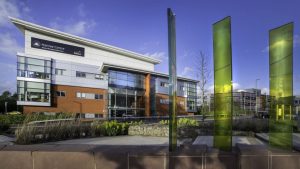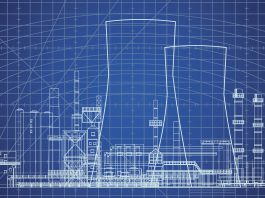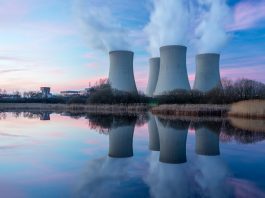Professor Kate Royse, Director of the Science and Technology Facilities Council’s Hartree Centre, discusses how UK organisations are collaborating to accelerate fusion energy technologies.
Nuclear fusion, the process of fusing atoms together, can generate almost four million times more energy than a chemical reaction and four times more than the process of nuclear fission. As part of the global transition to efficient yet low carbon energy sources, fusion power holds great potential to help reduce our dependence on fossil fuels and tackle climate change.
Recognising the importance of nuclear fusion in the global energy transition, the UK has made a particular commitment to increasing its fusion potential in recent years. In 2021, the UK government published the UK fusion strategy, setting out how it will enable fusion energy. As part of this, the UK Atomic Energy Authority (UKAEA) is responsible for the Spherical Tokamak for Energy Production (STEP). STEP is the UK’s first prototype facility, which will pave the way for commercial development of fusion power stations.
Last year, the Hartree Centre and the UKAEA took the first steps towards creating a UK centre of excellence in extreme scale computing for fusion. This is located at the Science and Technology Facilities Council (STFC)’s Daresbury Laboratory, at Sci-Tech Daresbury.
STFC’s Hartree Centre and UKAEA will collaborate to design technologies to help make fusion energy a commercial reality. The five-year joint project will see staff from both organisations apply the latest supercomputing systems, Artificial Intelligence (AI), and data science expertise to address the challenges and barriers to the delivery of commercial fusion energy. They will develop technologies for modelling and understanding plasma; modelling ‘digital twins’ of future fusion power plants; create prototype tools for advanced data management; and use AI tools to give insights into things such as machine control and uncertainty quantification. The collaboration is now progressing into an exciting second phase, which involves more than 30 members of staff from both the UKAEA and the Hartree Centre.
Professor Kate Royse, Director of the Hartree Centre, spoke to The Innovation Platform to explain more about the work of the Centre, the collaboration, and the future of fusion energy in the UK.
How does the work of the Hartree Centre help to deliver on the UK’s fusion energy programme?
There are many complex engineering hurdles that need to be overcome before fusion energy can be produced as part of a large-scale, affordable low carbon energy supply for the future. These include producing and managing the ultra-hot gas (plasma) where the fusion process happens and challenges in the development of materials that can tolerate extreme conditions, such as withstanding particles heated to hundreds of millions of degrees.

© Science and Technology Facilities Council
The challenges of simulating complex, strongly-coupled multiphysics systems at the exascale (hybrid electric JET turbines, hadron beam therapy systems, small modular powerplants, etc.) are ubiquitous and benefit strongly from multi- and interdisciplinary collaboration. This is where the Science and Technology Facilities Council’s Hartree Centre and UK Atomic Energy Authority collaboration can fundamentally address these challenges.
Together with UKAEA, we are applying the latest algorithmic and modelling approaches to advanced supercomputing systems that enable AI and data science expertise to address the challenges and barriers to the delivery of commercial fusion energy. We are using supercomputers to provide simulations and models in order to better understand:
- Producing and managing plasma (ultra-hot gas);
- Developing ‘digital twins’ of future fusion power so that we can optimise their design;
- Developing prototype tools for advanced data management; and
- Using AI tools to give key insights, such as into machine control and uncertainty quantification.
We are working hand in hand with the fusion scientists and engineers at the UKAEA to reduce the time it takes to design the next fusion machines and realise ambitions of using fusion as a main energy source. Our skills in data science, AI, and software engineering are complementary to the team at UKAEA tasked with the in-silico design of fusion energy machines.
How can fusion energy overcome challenges towards a low carbon future?
Fusion energy has the potential to be a revolutionary and limitless energy source that will help us reduce our dependence on fossil fuels and tackle climate change.
Fusing atoms together generates nearly four million times more energy than a chemical reaction, such as the burning of coal, oil, or gas, and four times more than nuclear fission.
The advantages of fusion energy are far-reaching, and include:
- No greenhouse gas emissions;
- No long-term radioactive waste;
- It is a virtually unlimited energy source; and
- It is intrinsically safe.
How is innovation and technology helping to make fusion energy a commercial reality?
The work that we do at the Hartree Centre helps scientists develop viable fusion energy technologies virtually, rather than relying on expensive, real-world prototyping. Using supercomputing and Artificial Intelligence technology to develop sophisticated digital models, we can help fusion scientists and engineers explore viable reactor technologies in faster timescales, more affordably. This helps accelerate the pace at which we can make fusion energy a commercial reality.
In 2021, it was announced that a new centre of excellence in extreme scale computing in fusion will be built at STFC’s Hartree Centre. Why is the Hartree Centre a good location for this and what is it hoped that this new centre will help to achieve?
The Hartree Centre is home to some of the most advanced computing, data, and AI technologies in the UK. Working with UKAEA – a global leader in fusion energy science and technology – we have the potential to make the breakthrough needed to make fusion commercially available.
The Hartree Centre will apply world-leading supercomputing and data science expertise to address some of these challenges, including understanding and modelling plasma, and producing the innovations by developing ‘digital twins’ of future fusion power plants. These sophisticated models are a key element for helping scientists and engineers develop viable reactor technologies virtually.
We are also looking at data management, which involves handling huge volumes of data that will be created from large-scale simulations of virtual reactors, and when the physical reactors are up and running. This can be used together to rapidly improve understanding of function and day-to-day management, as well as paving the way to optimise future machines. The converging landscape of supercomputing and AI, combined with this unique collaboration, will accelerate the technology roadmap needed to make clean energy from fusion a reality and will establish the UK as an international leader in applying extreme scale computing to fusion engineering design.

© iStock/jiefeng jiang
What are your hopes for the direction of fusion within the next five years?
While fusion might not power the world for some time yet, we are laying the foundations for it now through world-leading research, skills, and development. It is fantastic to be working in such close collaboration with UKAEA, to co-design the tools, technologies, and methods required by industry to accelerate the UK fusion programme.
We have a strong track record working with and supporting UK industry to fully embrace and integrate the latest digital and AI technologies – this will pave the way for businesses to adopt solutions from research leaders like UKAEA to realise the timely delivery of commercial fusion energy. The pace and the support from UK industry will be critical to ensuring we remain international leaders in fusion.
Professor Kate Royse
Director
Hartree Centre, Science and Technology Facilities Council
www.hartree.stfc.ac.uk
https://www.linkedin.com/in/katherine-royse-aa525821/?originalSubdomain=uk
https://twitter.com/katherineroyse?lang=en
Please note, this article will also appear in the eleventh edition of our quarterly publication.









